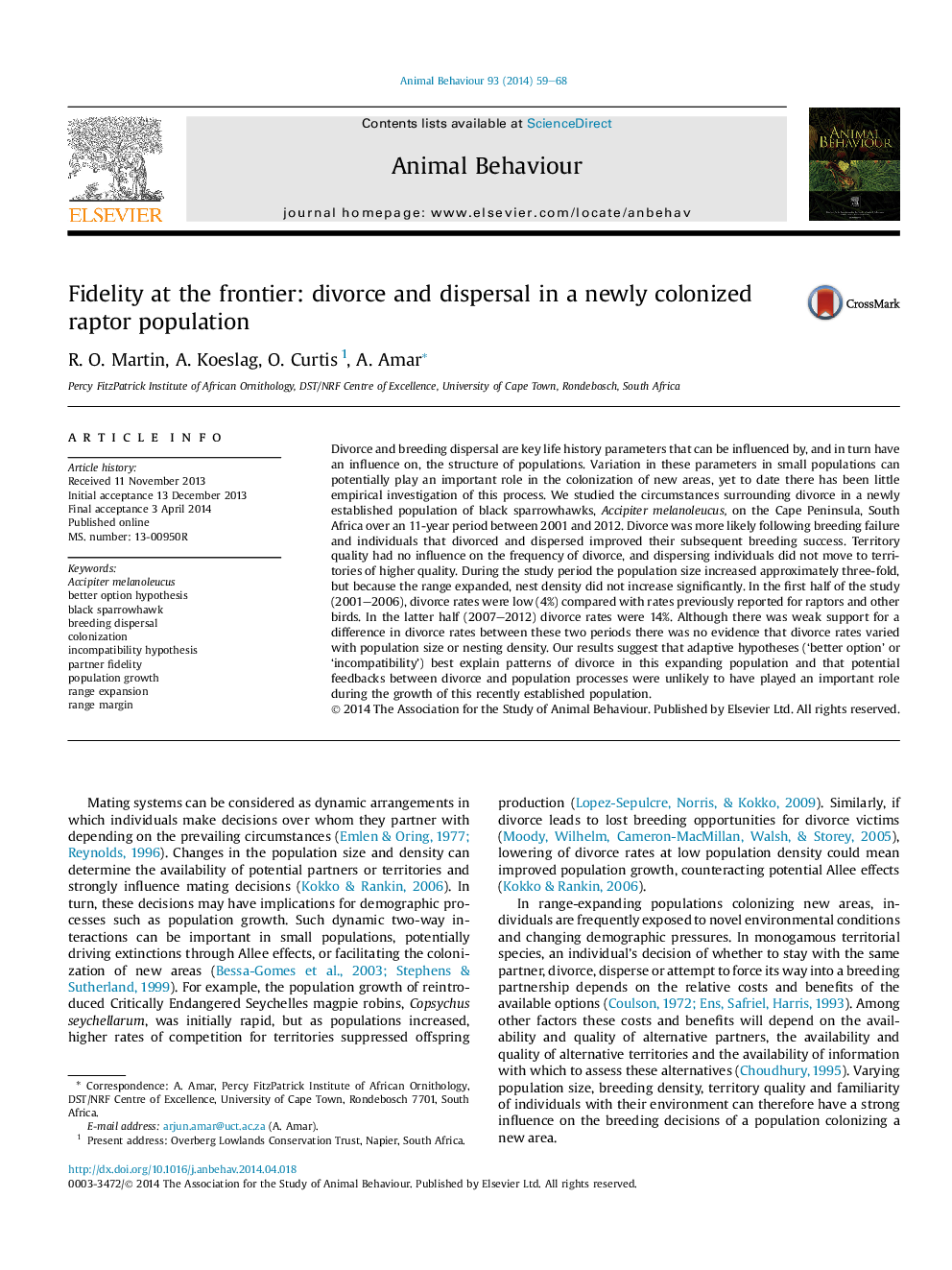| Article ID | Journal | Published Year | Pages | File Type |
|---|---|---|---|---|
| 8490427 | Animal Behaviour | 2014 | 10 Pages |
Abstract
Divorce and breeding dispersal are key life history parameters that can be influenced by, and in turn have an influence on, the structure of populations. Variation in these parameters in small populations can potentially play an important role in the colonization of new areas, yet to date there has been little empirical investigation of this process. We studied the circumstances surrounding divorce in a newly established population of black sparrowhawks, Accipiter melanoleucus, on the Cape Peninsula, South Africa over an 11-year period between 2001 and 2012. Divorce was more likely following breeding failure and individuals that divorced and dispersed improved their subsequent breeding success. Territory quality had no influence on the frequency of divorce, and dispersing individuals did not move to territories of higher quality. During the study period the population size increased approximately three-fold, but because the range expanded, nest density did not increase significantly. In the first half of the study (2001-2006), divorce rates were low (4%) compared with rates previously reported for raptors and other birds. In the latter half (2007-2012) divorce rates were 14%. Although there was weak support for a difference in divorce rates between these two periods there was no evidence that divorce rates varied with population size or nesting density. Our results suggest that adaptive hypotheses ('better option' or 'incompatibility') best explain patterns of divorce in this expanding population and that potential feedbacks between divorce and population processes were unlikely to have played an important role during the growth of this recently established population.
Related Topics
Life Sciences
Agricultural and Biological Sciences
Animal Science and Zoology
Authors
R.O. Martin, A. Koeslag, O. Curtis, A. Amar,
